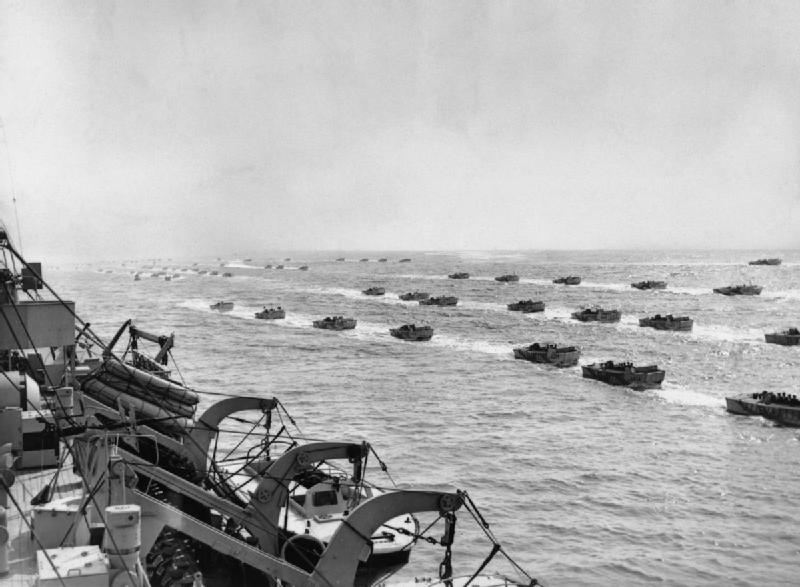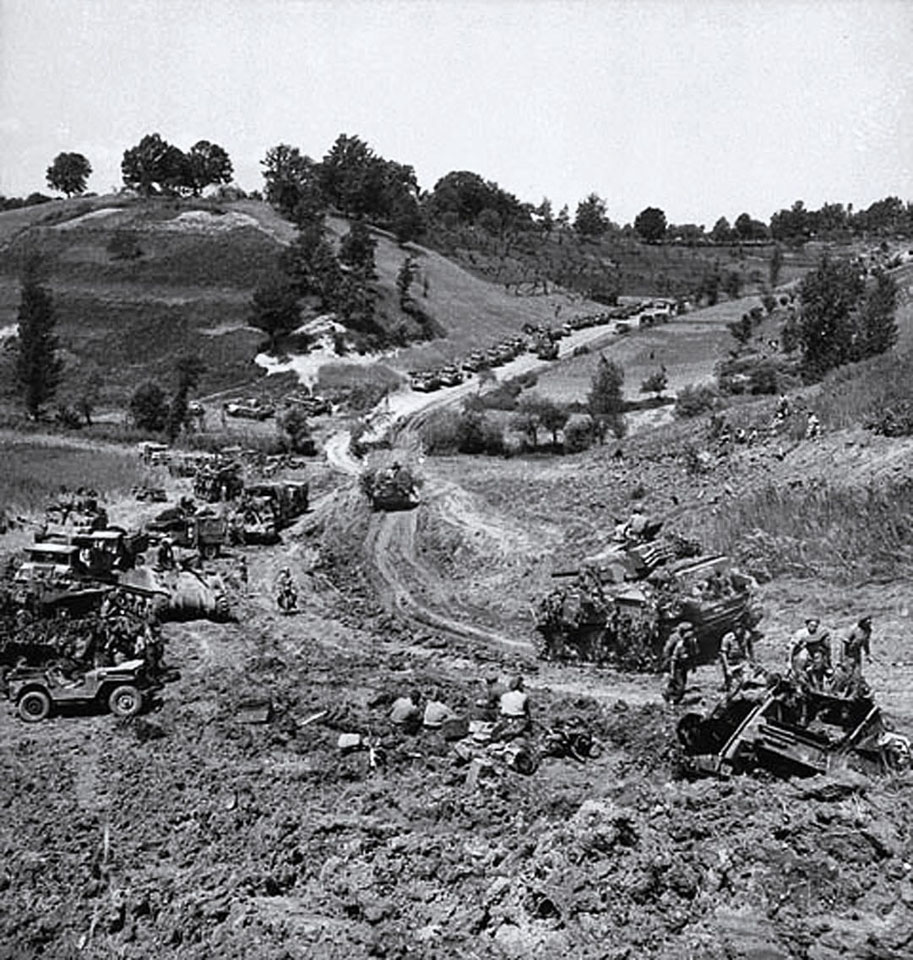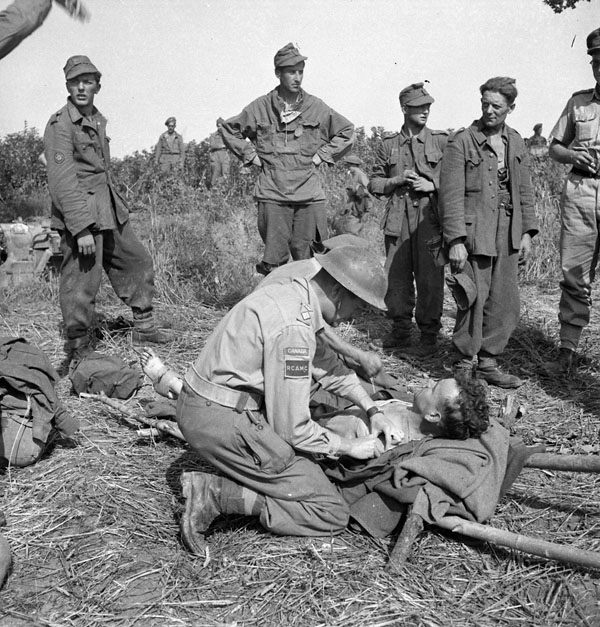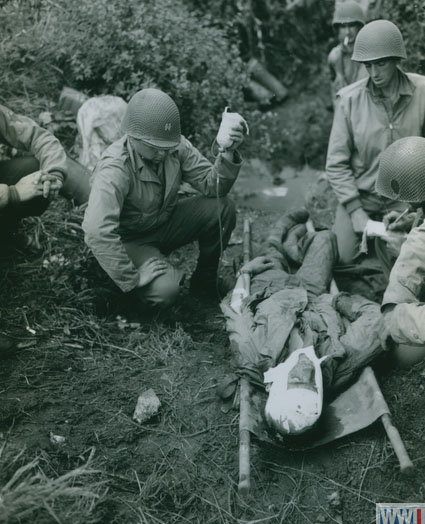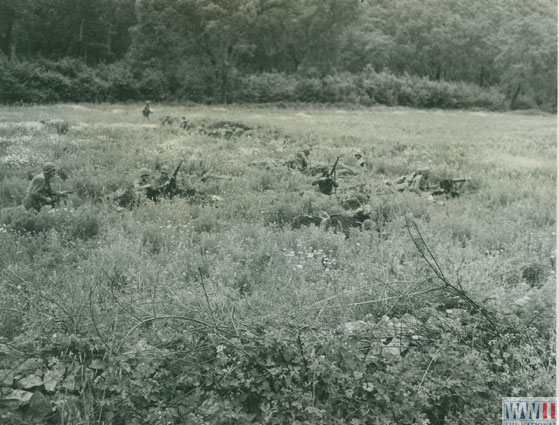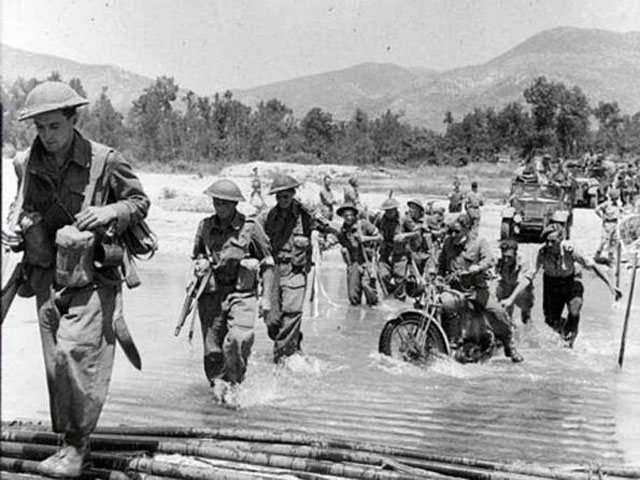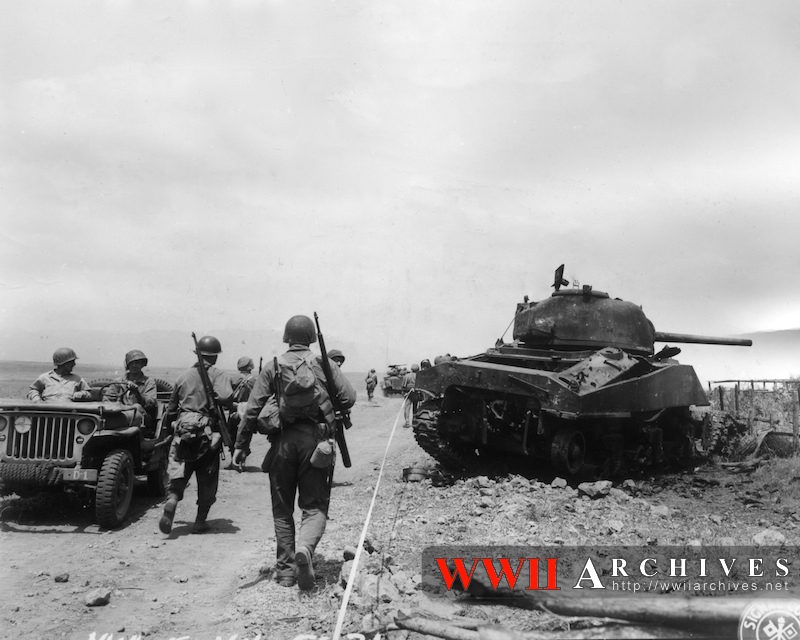Air Operations, CBI
BURMA- 1 7th Heavy Bomber Command B-24 attack a village in the Arakan coastal region.
- More than 20 10th Air Force P-40s attack numerous targets in and around Myitkyina.
- More than 60 10th Air Force A-31s attack Japanese Army positions.
Air Operations, Central Pacific
US carrier aircraft from Task Group 58.6 [see May 20, 1944] attack Wake Island.
[Air Operations, Europe
RAF Spitfires shoot down 8 FW-190 fighter-bombers north of Rome.
RAF BOMBER COMMAND
Evening Ops:
- 442 aircraft are sent to attack 2 railway yards at Aachen, Aachen-West and Rothe Erde, east of town. Included in the total are 264 Lancasters, 162 Halifaxes and 16 Mosquitos from all Groups except No. 5.
- The targets are important links in the railway system between Germany and France. Local reports say that both targets are hit with the one east of town hit the hardest. Because the targets are in a German town, more planes than normal are sent for a railway attack. Many bombs fall in Aachen and in the villages near the railway yards.
- 18 Halifaxes and 7 Lancasters are lost.
- 59 Lancasters and 4 Mosquitos of No. 5 Group are sent to attack the Philips factory at Eindhoven, but the Master Bomber orders the force not to bomb because of poor visibility. 1 plane does not hear the order and drops its load.
- There are no losses.
- 106 Halifaxes, 102 Lancasters and 16 Mosquitos, split into small groups, attack coastal gun positions at Boulogne, Colline Beaumont, Le Clipon and Trouville without loss.
- 55 Lancasters and 7 Mosquitos of Nos. 5 and 8 Groups attack the Ford motor factory at Antwerp, but the bombs miss the target. Some bombs fall on nearby dockside buildings.
- There are no losses.
- 15 Mosquitos are sent to Berlin, 18 Halifaxes and 7 Stirlings lay mines in the Frisians and off Brest, and there are 31 Serrate and 8 Intruder patrols and 6 RCM and 23 OTU sorties.
- 1 RCM Halifax is lost.
FRANCE:
- During the afternoon, 400 2nd and 3rd Bomb Division B-24s attack the Creil, Melun, and Poix Airdromes and the Paris/Orly Airport.
- 33 B-24s are damages
- 517 1st and 3rd Bomb Division B-17s attack the city of Berlin and targets of opportunity.
- 33 B-17s are lost, 256 are damaged
- USAAF fighter pilots down 32 Luftwaffe aircraft between 1010 and 1155 hours.
- 16 USAAF fighters are lost with their pilots
FRANCE:
- More than 450 IX Bomber Command B-26s attack V-weapons sites, coastal fefenses, and airdromes.
- 9th Air Force P-38s and P-47s bomb four landing fields.
- USAAF fighters down 5 Luftwaffe fighters between 1920 and 2010 hours.
ITALY:
- 12th Air Force aircraft send the day attacking scores of tactical, communications, and transortation targets at or behind the fluid battlelines. The destruction of five bridges by 12th Air Force medium bombers in the German Army rear virtually seals the battle area from resupply and reinforcement. Hundreds of motor vehicles are destroyed or disabled.
AUSTRIA:
- 15th Air Force B-24s attack the Luftwaffe airdromes at Bad Voslau, Graz, Munchendorf, and Wollersdorf.
- 15th Air Force B-17s attack aircraft-industry targets near Wiener-Neustadt.
- In heavy fighter action during the penetration, target, and withdrawal phases of the various attacks, 15th Air Force escort pilots are credited with downing 34 and probably downing 9 Luftwaffe fighters between 0950 and noon.
- 15th Air Force B-17s attack a rail viaduct at Aviso.
Air Operations, New Guinea
- 3rd Light Bomb Group A-20s attack Kamiri and Namber airfields on Noemfoor.
- 5th Air Force B-25s, A-20s, and fighter-bombers complete more than 200 sorties against targets from Hansa Bay to Wewak.
Arctic
Catalina 'V' of No 210 Squadron sights a surfaced U-boat at a range of five miles. The aircraft attacks throught heavy flak dropping six depth charges. The explosion seems to blow U-476 out of the water before the submarine sinks stern first.
| Class | Type VIIC |
| CO | Oberleutnant zur See Otto Niethmann |
| Location | Arctic, SW of Lofoten Islands |
| Cause | Foundered following air attack |
| Casualties | 33 |
| Survivors | 21 |
Battle of the Atlantic
Sunderland 'R' of No 4 OTU sights U-675 and attacks through flak. Six depth charges are dropped from 20 feet. After the explosions, the U-boat's bows rose to the vertical and began to sink. There was a further large explosion and the bows disappear.
| Class | Type VIIC |
| CO | Oberleutnant zur See Karl-Heinz Sammler |
| Location | Norwegian Sea, NW of Stradtlandet |
| Cause | Air attack |
| Casualties | 51 |
| Survivors | None |
CBI
BURMAThere are strong counterattacks by units of the Japanese 18th Division south of Myitkyina and they drive the 3rd Marauder Battalion out of Charpate and open the road north to Myitkyina.
On the Salween River front the Chinese 226th and 228th Regimenst carry out an ineffective frontal attack against a ridge enclosing the Pingka valley to the southeast.
[CBI
Gen Joseph Stilwell reinforces Myitkyina with the 209th Engineer Combat Battalion, converting them to infantry.
[Eastern Front
600 German paratroopers make a surprise assault on Yugoslave Partisan headquarters near Drvar. Tito and Randolph Churchill, son of the prime minister, barely escape.
[Italy
At Anzio the attacks also continue. Cisterna is still held by the Germans but a little to the south Route 7 is reached near Latina by the 1st Armored Division. The Allies now have a salient between the German 10th and 14th Armies. Hitler authorizes Kesselring to withdraw to the Caesar Line, a defensive line which starts from the Tyrrhenian coast about half-way between Anzio and the Ostia Lido and reaches the Adriatic in the area of Pescara, touching Albano, Popoli and Chieti. To slow down the Allies' movement as much as possible, the Germans carry out effective rearguard actions in which the Hermann Goering Panzer Division plays a major part enabling von Vietinghoff's forces to withdraw successfully.
The attacks of 5th and 8th Armies continue. On the Tyrrhenian coast the American 85th Division captures Terracina despite resistance from 29th Panzer Grenadier Division, from which the Germans have already retired.
In the northern sector of the front, units of the Canadian I Corps take Pontecorvo in the morning, putting pressure on the Germans in the fortified positions north of Aquino. Meanwhile the Canadian 5th Armored Division reaches the Melfa River and establishes a bridgehead on the north bank during the night.[MORE]
[New Guinea
Brig-Gen Edwin D. Patrick takes command of the Wakde Task Force from Brig-Gen Doe, who leaves for Biak. Elements of the 158th RCT (TF TORNADO) cross the Tor River moving toward Sarmi where they encounter heavy fire from Japanese in prepared defensive positions at the Tirfoam River. Employing armored cars and flamethrowers, the US 158th Combat Group gradually opens up a road west from the Arare beachhead toward Sarmi, and reaches the Tirfoam River.
In the Aitape beachhead the Americans in the Nyaparake sector withdraw to a new line.
[Pacific
- Aircraft taking off from a group of aircraft carriers under the orders of Rear-Adm Alfred E. Mongomery bomb Japanese installations on Wake Island. The day before a squadron of US destroyers had shelled the enemy fortifications on Wotje atoll. By now the Americans have mastery of the Pacific. Not a day passes in which their air and naval forces do not strike some point of the 'sphere of common prosperity'. Adm Soemu Toyoda, inexperienced in battle but a good administrator, is planning to reorganize the Japanese naval air forces very much on the lines of the American task forces, and is getting ready to parry the next American move, which will almost certainly be the capture of the Marianas. If the Americans are sucessful in this new task they will have opened the way to the Philippines, and indeed to the very home islands of Japan. To avoid this danger he works out a plan, code-named A-GO, with the following objects: to attract the American fleet into the Marianas-Palau-Carolines sector and destroy it there by joint action by the whole fleet and all available land-based and carrier-based aircraft. If in spite of this action the enemy succeeds in carrying out the landing in the Marianas, they will find themselves facing very large Japanese forces. The big group of task forces, including almost the whole of the Imperial fleet, is put under command of Vice-Adm Jisaburo Ozawa, 9 aircraft carriers, with a powerful escort of battleships, cruisers and destroyers, are assembled in the roadstead at Tawi-Tawi in the Sulu Islands, the southernmost of the Philippines. The 1st Air Fleet, which completes the line-up, deploys its 540 aircraft on many different islands, from Chichi Jima in the north to Biak, off the north coast of Dutch New Guinea, in the south. 172 aircraft are stationed on the Marianas.
- The Japanese submarine RO-116 is sunk by the US destroyer escort England (DE-635) north of the Bismarck Archipelago.
- The Japanse frigate Iki is sunk by the US submarine Raton (SS-270) in the Netherlands East Indies area.
- The US submarine Gurnard (SS-254), in an attack on a Japanese convoy in the Celebes Sea, sinks the fleet tanker Tatekawa Maru (10,090t) just off the coast of Mindanao.
- The US submarine Lapon (SS-260) sinks the Japanese cargo ship Bizen Maru (4667t) and the merchant cargo ship Wales Maru (6586t) in the South China Sea.
- The Japanese transport Tachi Maru (1891t) is sunk in a collision near Chinhai, China.
Images from May 24, 1944
|
|
|
|
|
|
|
|
|
|
